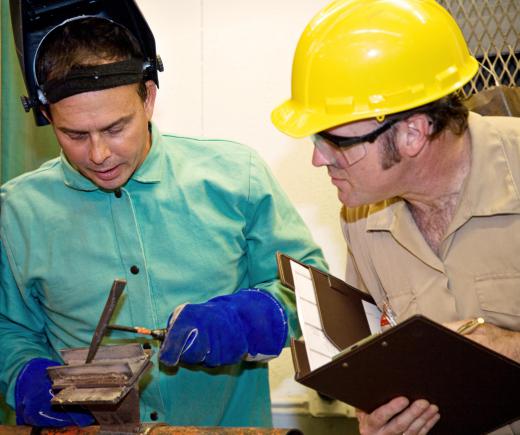At WiseGEEK, we're committed to delivering accurate, trustworthy information. Our expert-authored content is rigorously fact-checked and sourced from credible authorities. Discover how we uphold the highest standards in providing you with reliable knowledge.
What does a Certified Industrial Hygienist do?
A certified industrial hygienist, also known as an occupational hygiene specialist, is responsible for identifying and eliminating any physical and environmental risks to employees from a workplace. His or her major responsibilities include looking for biological, chemical, physical, ergonomic and psychosocial problems within an organization. There are many ways to test and measure these issues. Thy hygienist also makes suggestions on ways to correct these problems and improve the working environment.
In order to test the biological well-being of a workplace, there are several tests that a certified industrial hygienist performs. Dust sampling is a common tool used to determine whether there are any germs or diseases being spread throughout a workplace. Performing a walk-through tour and inspecting the overall sanitation level is another common practice.

Chemically, a certified industrial hygienist acts more like a scientist to track down workplace problems. Chemical issues frequently are invisible, so he or she must perform more than a walk-through tour to find problems. Radiation testing equipment, air samples and chemical evaluations are performed frequently to ensure that all areas are at acceptable levels for human interaction. Chemical production plants, nuclear power plants and manufacturing industries frequently require this kind of attention from a hygienist.

Physical and ergonomic issues are very similar responsibilities for a certified industrial hygienist. The hygienist must be well researched on governmental regulations and insurance recommendations regarding both. For example, in a warehouse environment, he or she must monitor how much physical lifting is being performed and whether employees practice proper back support and lifting techniques. Ergonomically, the hygienist can perform assessments of employees to see how they can better position themselves. For example, ensuring that office workers use the proper chairs and keyboards can help avoid cases of carpal tunnel syndrome.

Interviewing subjects and determining the psychosocial layout of a work environment is another task of a certified industrial hygienist. It is important for him or her to learn about employee treatment from management, relationships between peers and the treatment of different sexes. Inadequate psychosocial workplaces where individuals don't feel psychologically secure can impede productivity.

After the industrial hygiene of a workplace has been determined, the hygienist makes his or her recommendation. These can range anywhere from standing straighter when lifting boxes to completely remodeling a factory to avoid chemical contamination. The hygienist frequently will work up risk assessments to present to management, showcasing the current and future risk versus the risk if the issues are resolved.
AS FEATURED ON:
AS FEATURED ON:
















Discuss this Article
Post your comments